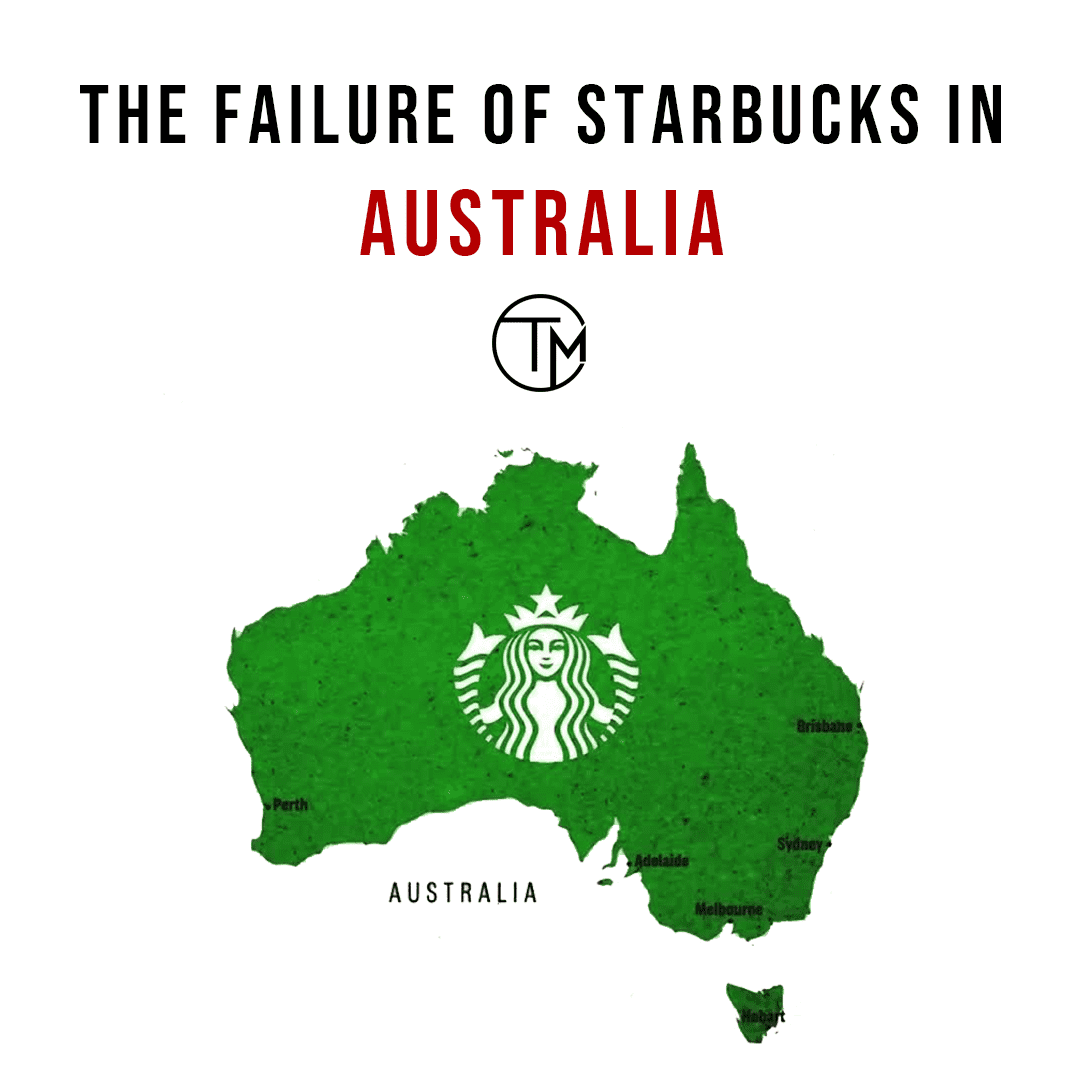Everyone knows Starbucks – the largest coffeehouse in the world, operating in over 76 countries with 30,626 stores. It has single-handedly changed the coffee culture around the world.
Even the sentence ‘Do you want to get some coffee?’ has been replaced by the infamous Wanna get some Starbucks?
But the megachain’s story has not been all highs as shown through the faltering of its expansion in Australia in 2008. The reasons for going into Australia were quite promising; 75% of Australians drink coffee, which amounts to nearly 18 million people.
They assumed the competition was going to be quite low with their major competitors being Dunkin Donuts and Gloria Jeans; they felt that they could easily gain a large market share within the coffeehouse market, but what occurred was quite the opposite.
Starbucks had 87 stores at the start of 2008, but by the end, over 61 of its stores were shut down, leaving them with a dismal number of 23 stores, but why did this happen?
Starbucks opened its first shop in Australia in 2000, and that number only grew over the years. That was where the first problem arose, Starbucks’ USP is its ability to hook customers in and develop this ‘need’ for it.
Their customers are some of the most loyal of any coffee chain. The customers become loyal to Starbucks because of its unique coffee and seasonal promotions like the Pumpkin Spice Latte, inviting interiors, and because it also offers a place to socialize.
Developing brand loyalty in Australia was something Starbucks ignored as they were too aggressive in launching new stores, and refused to consider the possibility that too many stores would ultimately make Starbucks lose its value rapidly. They didn’t give the Australian consumer the time and opportunity to develop a taste for Starbucks.
The decisions on locations were also damaging because they made Starbucks too accessible. It was in major cities, outer suburbs, and even a few towns, which worked well for expansion in America and China, but it was too available for the Australian consumer. There was a Starbucks everywhere they looked so it did not have any exclusivity factor to attract their new market, and so they just reverted to other coffee shops.
Another reason was the lack of understanding of their target market. Starbucks assumed that its only competitors would be the same ones they faced in America and other companies, such as Gloria Jeans, Costa Coffee, and Dunkin Donuts, to name a few. They knew that the Australian coffee market was one of the largest in the world, but what was unknown to them was that Australians are spoiled in their choice of coffee.
The coffee culture in Australia is much more personal than in other countries. People would often have one loyal barista or coffee shop that they went to, formed a personal bond with the owners, and would be almost nostalgic for them to visit. It was also more about socializing.
People spent around 2-3 hours playing pool or unwinding in cafes; in contrast, Starbucks was known for this idea of ‘fast coffee’ in Australia—you got it during lunch breaks. This prevalent bond that kept customer loyalty just wasn’t there for the Australian consumer, who went back to their tried and trusted coffee shop, which also costs less than Starbucks.
Finally, they completely ignored adapting to their new market. Looking at McDonald’s in India, one of the key elements was this idea of integrating themselves within the community. They made tailored menus for India including more vegetarian options and were involved in the local culture with events like Holi and Diwali. This was an element that Starbucks ignored.

Starbucks was at the top of the American market at that time and thought its well-thought-out business plan could be enrolled in Australia and they would not face any issues or problems, which was quite the opposite to what happened. This was because Australians had different coffee preferences from what Starbucks supplied to them.
Starbucks was a lot more orientated to lattes and iced coffee and lots of sugar, whereas the demand in Australia was the largest for espressos and specialty menus such as flat whites and Australian macchiatos, which Starbucks did not think about providing.
Thus, their lack of adaptation and tailoring their menu to what the Australian market wanted was quite damaging, as they did not attract enough local consumers to sustain their expansion, resulting in major losses of $105 million, and massive store closures. The Starbucks menu was too sweet, too expensive and the experience was too impersonal to keep the interest of the Australians, and so the demand was low for Starbucks, reflected in what occurred in 2008.

What Starbucks could’ve done was instead achieved by Gloria Jeans Coffee.
Starbucks hindered its growth with a lack of research and delving head-first into the market. There was no connection and understanding of the Australian coffee culture, which reduced its potential customers.
However, Gloria Jean’s Coffee approached the market differently. Working with 2 Australian franchisors and entrepreneurs, they launched 2 stores, to begin with, seeing how they worked, and then chose to develop and increase their stores based on that. It worked wonders. Gloria Jeans now has over 400 stores and 36 million customers in Australia.
The key asset that led to all this development was understanding the culture and the steady expansion and growth while keeping in mind the consumers’ responses to their stores.
With the help of the franchisors, they created an interior that was warm and inviting, encouraging people to stay, and adapting its menu to include a huge variety of espressos, the most popular coffee in Australia, and many specialties that Australians liked.
That was the key that Starbucks missed, and now Gloria Jean’s Coffee picked up the pieces of Starbucks and became the most successful US ideated cafe in Australia.
Starbucks’ failure in Australia proves to us that even the most valuable of businesses with such huge recognition can still fall under the basic pitfalls of expanding a business.
This idea of thinking that their business model was supreme and did not need to be altered, and a lack of understanding and adapting to the market that they set out to dominate ultimately left them with large losses, huge shutdowns, and many staff being laid off. Coupled with the recession of 2008, Starbucks was in a very vulnerable place.
This provides a lesson for aspiring multinationals—to integrate themselves within the community and the market, and not dive head-first into massive expansion. But things are looking hopeful, as it has started opening more stores in Australia but with a different objective: to remain a familiar face to tourists that visit there.
Apart from that in 2018, it opened its first store in Milan, with a tailored menu, understanding of the market and culture and it has been growing and learning from its mistakes in Australia. It has also decided to keep in mind the responses of customers and not expand too quickly to keep the interest of the consumers at hand and keep its prices, menu, and experience something that even the locals can appreciate.










